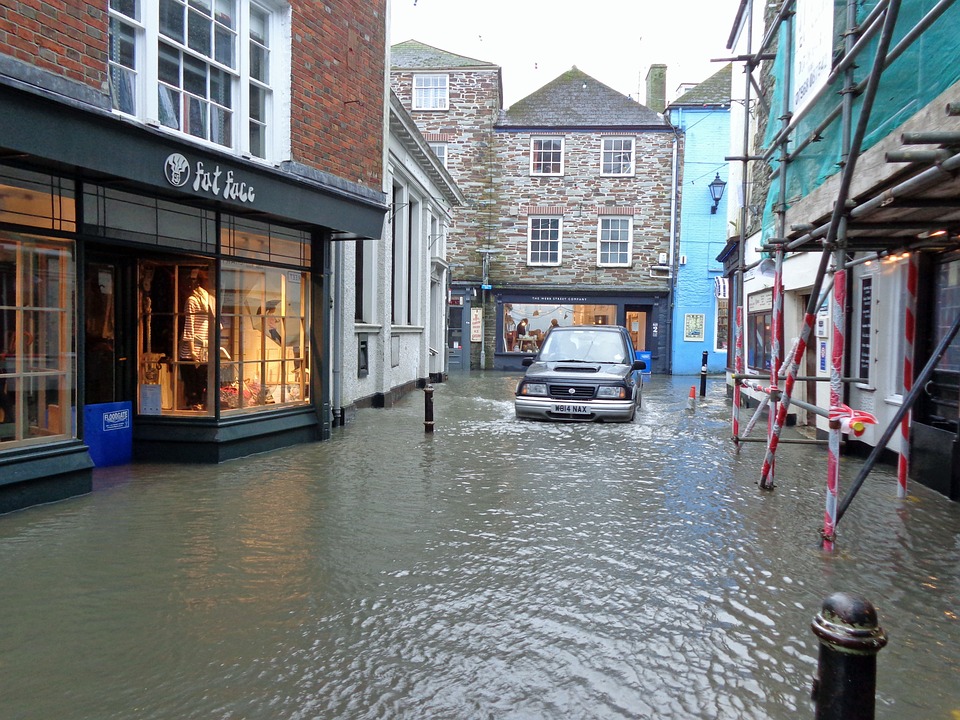If you live in a low-lying geographic area, you may have already experienced a flash flood. A flash flood, which occurs without much warning, is a result of heavy rainfall, excessive meltwater, or the destruction of man-made dams. Flooding happens because the ground isn’t able to absorb the water fast enough, creating excessive amounts of runoff, which can collect in roads, gullies, and streams. Flash floods differ from regular floods because they have the potential to flood within less than six hours of rain starting.
However, flash floods don’t always occur when it’s raining, so being aware of your surroundings is crucial. For those traveling or hiking, especially in slot canyons, it’s important to check weather forecasts for surrounding areas. Even if it isn’t raining near you, rain from miles away could cause flooding in your area depending on the lay of the land. Make sure you check flood warnings before venturing into areas that would be highly susceptible to flooding.
If you get caught in a flash flood, here are some things you can do to keep safe:
In a car — Flash flooding can be very dangerous, especially in a car. Many people feel more secure when in a vehicle. However, the Federal Emergency Management Agency has said that as little as half a foot of water can cause vehicles to lose control during a flash flood, while more than two feet of water can carry away larger vehicles.
Nearly 100 deaths that occur due to flash floods each year are a result of reckless driving in flooded areas. If you are driving during a flash flood, you should attempt to get to higher ground immediately. However, you should never try to cross moving water in your vehicle. Since you can’t see what’s underneath, you could potentially be driving into a sinkhole, or into very deep waters that can sweep your vehicle away. If you encounter running water, turn your car around and find a different route to where you’re going.
If you end up in water, make sure your car’s windows are open, and that your seatbelt is off. You may be tempted to keep everything closed, but allowing water to rush through your car will minimize the pressure of the water against the door. It will also allow you to either open the door of the car and escape, or you will be able to go through the window. Leave your vehicle behind, then follow the rules for people who are dealing with floods on foot.
On foot — Once you receive warnings of a flash flood in your area, it’s essential to get high up and away from where water might be rushing. If possible, avoid walking through any running water. Flash flood waters can carry hazards that can injure you or cause you to lose your balance and be swept away. Additionally, you may not be able to judge how deep the water is.
Ideally, in this kind of situation, you would avoid going into the water at all costs. However, if you need to go through running water to get to safety, make sure that it is lower than your ankles. Before trying to cross, you should make sure that the ground beneath is not muddy or slick, and also check to make sure that it is stable enough to walk over. You can use any kind of long objects, like a stick, pole, or long umbrella to do this. If worse comes to worse and you find yourself being swept away in the waters, grab onto a solid object as soon as you can. If possible, you should climb onto the object to get out of the water. If you can’t grab an object, try to float on your back to avoid drowning, while watching out for any large debris that could injure you.
If you have small children with you, carry them, and avoid water at all possible costs.
What to do after the flood — After flooding, you may feel more secure and safe, but during this time, it’s just as important to be vigilant. If you were not home when the flooding occurred, don’t head home until local authorities deem that it’s safe to do so. On your way home, avoid any pools of water, or any water that is still moving. You should also avoid drinking tap water until it is declared safe.
While heading home, make sure you stay off any routes that could be damaged following the flood. Avoid muddy roads or roads that might have been weakened by flowing water. If your home sustained damage from flooding, be cautious when entering, and do not use any electricity inside your home.
Flash floods can cause devastating damage when they occur. However, if you are aware of what to do during a flash flood, your preparation can help save your life.

